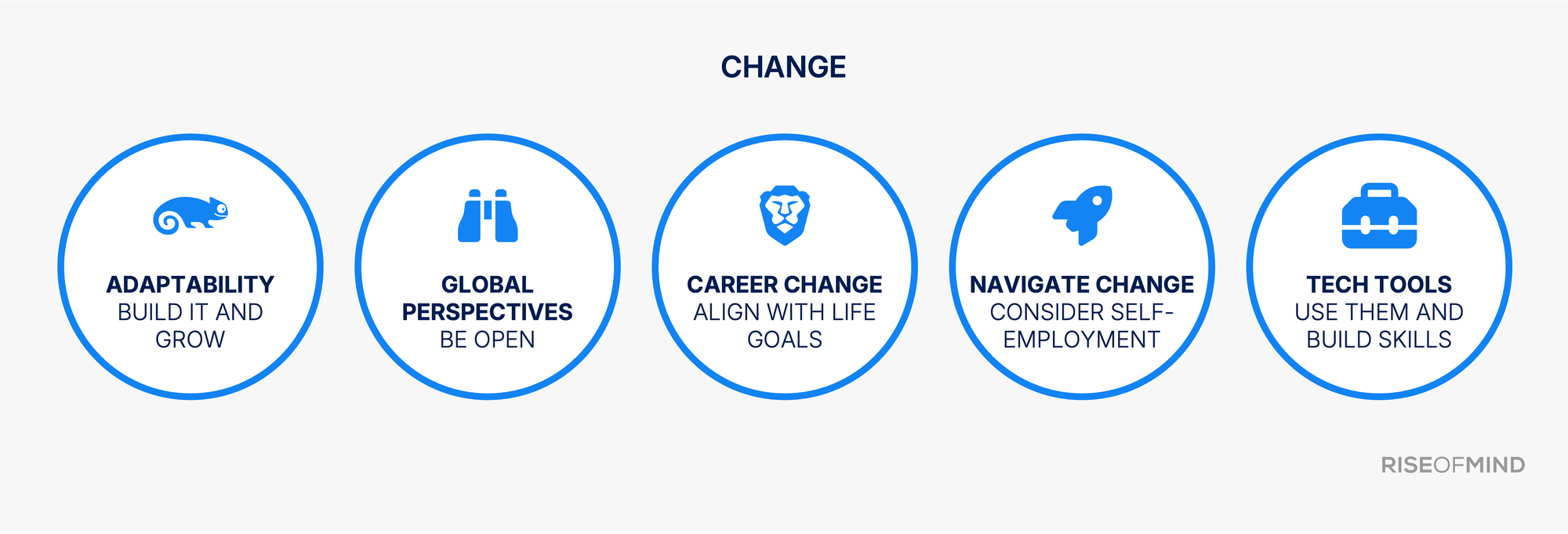In a world where industries transform overnight and artificial intelligence is revolutionizing traditional job profiles, professional adaptability is vital for survival. But change means far more than just "keeping up with the times" - it's your most powerful tool for sustainable career success.
Imagine waking up in the morning and looking forward to your workday. Your job aligns with your life goals, you feel valued, and you're continuously developing. Sounds utopian? It's not! The difference lies in your ability to not just accept professional changes, but to actively shape them.
The five pillars of career change

1. Adaptability as a career booster
Those who see change as an opportunity win. Whether it's unexpected job loss or industry upheaval - resilient careers emerge of such challenges. Flexibility in work models, industry-hopping, and crisis resilience become your superpowers.
2. Openness to new horizons
Internationality is today's norm. It's about more than geographical mobility - it's about overcoming mental boundaries. Choosing the right environment, leveraging international perspectives, and identifying reliable sources for market trends opens new doors including international ones.
3. Conscious reorientation for better quality of life
Successful career change connects your life goals with realistic career steps. Values-based career design, work-life integration, and purpose-driven choices ensure contentment and measurable progress.
4. Mastering different paths of change
Depending on your life phase, various options are available: Upshifting (climbing the career ladder), downshifting (consciously shifting down a gear), re-entry (returning after breaks), smooth exit (strategic transition), or entrepreneurship (jumping into self-employment). Each path requires specific competencies in self-management.
5. Future skills and technology integration
AI competency, continuous learning, and trend radar become basic equipment. Those who pragmatically integrate new technologies into their daily work while simultaneously strengthening human abilities that AI cannot replace remain future-ready.
Making change measurable
Successful career change can be planned and measured:
- Skill gap analysis: Comparison between current and required competencies
- Network quality: Number and quality of professional contacts
- Market value increase: Development of your own "market value"
- Goal achievement rate: Achieved vs. planned career goals
- Satisfaction index: Regular assessment of job satisfaction
Networking makes the difference
Career change does not function in isolation. Your people skills determine how successfully you approach change. Your environment influences your opportunities. Your resilience decides how you handle setbacks. Your life goals provide the direction.
Your next step
Career change is a continuous process that requires courage, strategy, and the right support. In the coming months, we'll deepen each of the five areas and provide you with concrete tools.
Start today with a simple question: In which of the five areas do you currently see the greatest need for action?
Download our RiseOfMind app and subscribe to our newsletter. This way you won't miss any insights and become part of a community of people who actively shape change.

